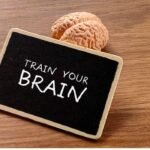Ever watched a group of students dutifully copy facts from a slide, only to forget them a week later? It’s a common scene, and it highlights a gap in traditional learning: the difference between knowing and understanding. What if you could turn your classroom or home into a vibrant hub of curiosity, where students don’t just accept information but actively probe, question, and connect it?
This isn’t a far-off dream. It’s the tangible result of weaving critical thinking exercises into the fabric of learning. These aren’t just extra worksheets or logic puzzles; they are short, structured routines that equip learners to analyze evidence, evaluate assumptions, and reason their way to rock-solid conclusions. Let’s explore how these powerful tools can transform passive listeners into active, engaged thinkers.
The Future of Learning is Thinking, Not Just Knowing
The world no longer rewards people for simply storing information in their heads. We carry the sum of human knowledge in our pockets. What the future demands is the ability to sift through that information, discern what’s credible, and use it to solve novel problems. This is the core muscle that critical thinking exercises are built to train.
Think of it this way: you can give someone a fish, or you can teach them how to fish. Traditional teaching often hands out the fish. Critical thinking exercises teach the method, the patience, and the judgment needed to catch any fish, in any pond, for a lifetime.
Top 3 Critical Thinking Exercises You Can Use Today
You don’t need a complete curriculum overhaul to get started. Here are three simple, adaptable exercises built from research-backed frameworks.
1. The “Claim-Support-Question” Routine (A Visible Thinking Routine from Harvard’s Project Zero)
This simple structure teaches learners to build and critique arguments.
- Claim: Make a statement about a topic. (e.g., “In the story, the main character is more brave than smart.”)
- Support: Identify all the evidence that backs up the claim. (e.g., “He confronted the bully despite being smaller,” and “He ran into the burning building without a plan.”)
- Question: Now, challenge it. What evidence contradicts the claim? What doubts do you have? (e.g., “But was it brave or reckless? Did he ever use his intelligence to outsmart anyone else?”)
This exercise works because it forces students to see multiple sides of an issue, moving beyond a single, right-answer mindset.
2. The Case Method (Borrowed from Business and Law Schools)
Present students with a real-world, messy problem with no obvious solution.
- Example: “A local park is being overrun by litter. The city’s budget is tight. What should they do?”
- The Process: Students work in groups to analyze the problem, identify stakeholders (park users, city council, local businesses), brainstorm solutions, and predict the consequences of each. They must then present and defend their best recommendation.
This exercise mirrors real-life decision-making, requiring analysis, empathy, and reasoned judgment.
3. The Ladder of Inference (A Systems Thinking Tool)
This is a powerful meta-cognitive tool that helps students understand how they jump from raw data to their own conclusions and beliefs. Imagine a simple infographic showing a ladder:
- Bottom Rung (Observable Data): The pool of all available facts and data.
- Next Rung (I Select Data): I consciously and unconsciously select specific data based on my beliefs and biases.
- Next Rung (I Add Meaning): I interpret that selected data, adding my own cultural and personal meanings.
- Next Rung (I Make Assumptions): Based on my interpretations, I make assumptions.
- Next Rung (I Draw Conclusions): I form conclusions.
- Top Rung (I Adopt Beliefs): My conclusions shape my beliefs, which then influence what data I select in the future.
By “climbing down the ladder,” students learn to trace their thinking back to the facts, identifying their own biases and assumptions along the way.
Busting the Myths: Clearing Up Confusion About Critical Thinking
- Myth 1: “It’s just for gifted students or certain subjects like science.”
- Truth: These exercises are for every learner and are incredibly adaptable. A history class can analyze primary sources, an English class can deconstruct an author’s argument, and a math class can critique different problem-solving pathways.
- Myth 2: “It’s a soft skill that can’t be measured.”
- Truth: While nuanced, critical thinking can be assessed with clear rubrics that evaluate a student’s ability to identify evidence, consider perspectives, and explain their reasoning. The International Baccalaureate (IB) program, for instance, has well-defined criteria for critical thought.
- Myth 3: “It means criticizing everything and being negative.”
- Truth: Critical thinking is about constructive evaluation, not cynical dismissal. It’s about building a stronger, more resilient understanding, not just tearing ideas down.
3 Things to Try Tomorrow: Your Action Plan
Ready to dive in? You don’t need to wait. Here’s how to start.
- Start Small: Pick one exercise, like “Claim-Support-Question,” and try it for 10 minutes in your next lesson. Use it with a current event, a book character, or a historical figure.
- Focus on the “Why”: After a student gives an answer, simply ask, “What makes you say that?” This simple prompt forces them to uncover and articulate their reasoning.
- Document the Thinking: Make the thinking process visible. Use whiteboards, sticky notes, or journals not just for answers, but for the questions, the supporting evidence, and the assumptions students had along the way.
Integrating critical thinking exercises is like planting a garden. It requires intention, the right tools, and consistent care. But the harvest—a classroom of confident, curious, and capable problem-solvers—is well worth the effort.
What’s one small step you’ll take this week to foster more critical thinking in your learning environment?
You May Also Read: MySDMC SSO: Your Key to a Simpler Digital School Day
FAQs
At what age can you start using critical thinking exercises?
You can start as soon as children can express ideas! With young learners, simplify the language. Instead of “What evidence supports your claim?” try, “What did you see in the picture that makes you think that?”
How are these different from debate or argumentative writing?
While debate and writing are fantastic applications, the exercises themselves are the foundational practice. They are the structured drills that build the core skills needed to debate and write effectively, focusing on the process of thinking before the final product.
I’m not a teacher. Can parents use these at home?
Absolutely! Use “Claim-Support-Question” during dinner table conversations about a news story. Use the case method to decide on a family vacation activity. It’s about fostering a habit of inquisitive, reasoned discussion.
Do I need special training to implement these?
You can start without it, but as education authorities suggest, professional development helps immensely. Understanding the frameworks behind the exercises (like Project Zero) allows you to adapt them more effectively.
How do I assess progress in critical thinking?
Look for growth in students’ ability to:
- Point to specific evidence for their views.
- Consider alternative perspectives.
- Explain the steps in their reasoning.
- Revise their thinking when presented with new evidence.
Aren’t these just fancy graphic organizers?
Graphic organizers can be a part of it (like the Ladder of Inference), but the power is in the structured routine and the disciplined questioning, not just filling in boxes on a page.
What’s the biggest mistake people make when starting out?
Trying to do too much too soon. The most successful implementations start with one routine, practiced consistently, and slowly integrated across different subjects.










